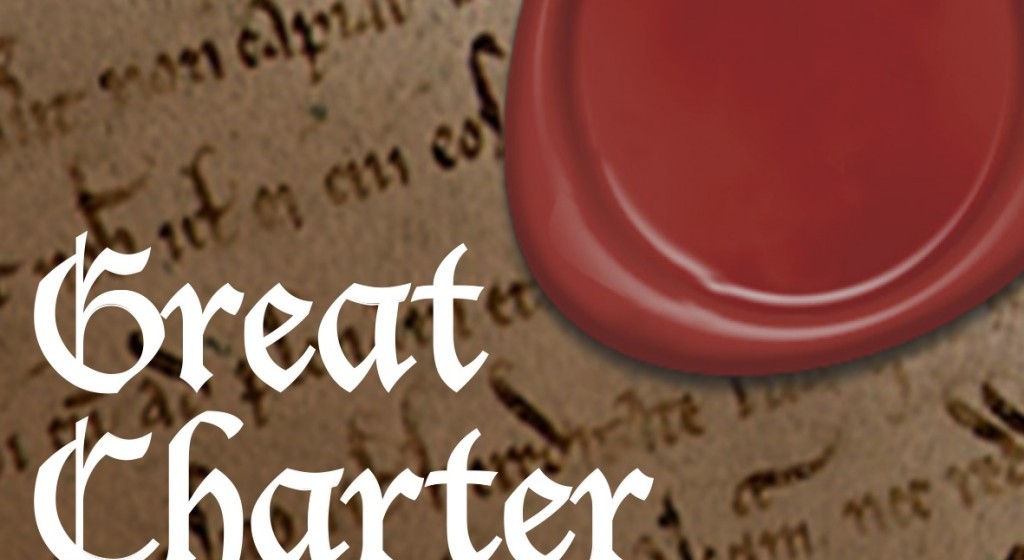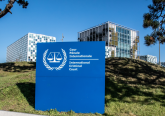Our rights are being infringed more and more on every side, and the danger is that we get used to it. So I want to use the 25th anniversary for us all to do that, to take the web back into our own hands and define the web we want for the next 25 years…. “But we need our lawyers and our politicians to understand programming, to understand what can be done with a computer.[1] – Sir Tim Berners-Lee
The above quote should come as no surprise to anyone with even a passing interest in digital rights. In recent times there has been growing interest by governments in how to respond to the sort of modern social problems that some might argue are facilitated by digital technology. Calls to control social media in times of civil unrest[2], monitor citizens’ communications in order to catch terrorists and paedophiles[3] and prevent citizens from using encrypted communications just in case they are saying something illegal[4] are all examples of government trying to respond to issues they are challenged on. All of these very clearly highlight an issue raised in Sir Berners-Lee’s quote above – that policy makers and legislators struggle to understand how the web works and how it can be “controlled”, while reflecting very little about whether the outcomes will infringe on the civil rights of citizens.
However, one policy debate that I have been very close to over the last few years, and one that illustrates how digital technology has changed our society and also how it creates new social contexts related to rights based issues, is that of access to pornography and sexual content online. This debate becomes particularly contentious when we explore the growing issue of young people accessing such material online.
Digital technology has changed society
In exploring this topic, I should state that a lot of my working life is spent talking to young people about how technology impacts on their social world and how they respond to the issues of growing up in the digital age. In these discussions we cover all manner of issues, such as relationships, sexual activity, gaming, communication, body image and, indeed, pornography. Many of these issues are difficult to talk about but, on the whole, I find myself engaged in discussions with young people who are passionate about the positive impacts of technology on their lives and how they are learning to address problems they face, mainly against a dearth of formal education on the topics.
Returning to the particular issue of sexual content, in the pre-Internet age pornography was certainly available, but not particularly easy to access, particularly for young people. It was either purchased in magazine form in newsagents or in a wider variety of formats in “specialist” shops. In both cases it was therefore very easy for the vendor to refuse the sale to a person under age. However, even back then determined young people would gain access to some material if they so wished. Indeed, my own early exposure to pornography came in secondary school with a peer bringing in magazines he had found in “his dad’s stash”. The online world has certainly, unquestionably, provided far greater access to sexual content, and in far more diverse and more extreme forms. Certainly there is far easier access to pornography post HTTP than there ever was before, and access that does not require a broker to deliver it.
Certainly from my own experiences talking to young people there is a definite interest in such content through secondary school and not just a select few – there is widespread access to pornography among the teen population, particularly for boys. And this is a concern – from a moral perspective it is rare that one would voice a view that young people accessing pornography is fine and we should just leave them to it. However, it does present some extremely complex challenges in addressing such issues, particularly if we are trying to balance rights to information with protection from harm.
Rights to information and protection from harm
In recent times, the policy spotlight has turned onto issues of online safety, arguably stemming from the Byron Review[5] which was the first UK government commissioned report on child online safety. In this report Professor Tanya Byron called for “better regulation” and a self-regulating industry that would adhere to codes of practice for child online safety by which they could be independently assessed and, if they failed to meet the code, risk reputational and potentially financial damage. It acknowledged the complexities of the space and that prevention is rarely a solution, and that education was a fundamental aspect in protecting young people from Internet “threats”.
However, while claiming to adopt recommendations from this report, from 2010 onwards the policy approach, which was initially looking at self-regulation, seemed to refocus from the broad approaches to online safety detailed in the review toward one that focused entirely on content control.
The fact is that the growth of the Internet as an unregulated space has thrown up 2 major challenges when it comes to protecting our children. The first challenge is criminal and that is the proliferation and accessibility of child abuse images on the Internet. The second challenge is cultural; the fact that many children are viewing online pornography and other damaging material at a very early age and that the nature of that pornography is so extreme it is distorting their view of sex and relationships.
The above comment comes from a speech David Cameron, the UK Prime Minister, gave in July 2013[6] around online child protection that focuses entirely on preventing young people from accessing harmful content. This demonstrates a particular attitude toward online child safety and, therein, a particularly governmental attitude toward the rights of children to access information online. Content is the only issue – there is no acknowledgement of problems such as sexting, cyberbullying, privacy or identify fraud.
Filtering may not be the answer
This speech reflected a policy direction that had been building for a couple of years, influenced in part by the media in the UK, that aimed to place pressure on Internet Service Providers (ISPs) to ensure that young people cannot gain access to “inappropriate content”. The direction gained a lot of support from some parts of the UK press, with headlines such as “Children grow up addicted to online porn sites: Third of 10-year-olds have seen explicit images”[7] supporting the need for industry to do more to make this happen. This view is very direct and simple – service providers are facilitating access to such content, therefore they should stop it. The solution to this problem was to put filters in place to ensure young people cannot access such material.
Certainly, it is shocking to hear that a third of 10 year olds are accessing pornography and clearly something needs to be done. However, when unpicking these statistics it becomes apparent that they come from a very small study and are unclear by what was meant by “explicit”. And it also seems to contradict a lot of experience in the field – I certainly speak with many primary aged children about content that has upset them when being online and it is extremely rare anyone will mention sexual content.
The pornography debate is a complex one and the research on its influence on children, and adults, equally difficult. The excellent review of the influence of pornography for the Office of the Childrens’ Commissioner[8] came to a number of conclusions (for example, that those who commit violent sexual assaults often have viewed violent pornography), but it also quite clearly stated there is a lot we still do not know (for example, whether accessing violent pornography causes consumers to commit violent sexual acts).
The other issue with this debate is from a government perspective it seemed you either supported their plans or “want to let children see pornography” and again these binary perspectives are not helpful. There are very few people in this field that would happily say that they don’t believe pornography has any impact whatsoever on young people and they should be free to access it. Certainly from my own conversations with teens, many, both girls and boys, are concerned about too much access, desensitization, issues of disrespect, unrealistic expectations, body image, etc.
However, to suggest that filtering is a solution to these complex challenges is concerning and a lot of the opposition to “solutions” comes from the knowledge that they simply will not work. While they will certainly be effective at preventing some content, they work by either blocking at a web address level or by keyword matching site content to make a “decision” about the sort of content therein. For example, “gay”, “cock” or “sex” are all words a filter would look for.
The choice of these three words is deliberate. While all of these words could be used to describe sexual content, they could equally be used to describe some other form of content, such as sexuality, gender or even ornithology. If we rely on filters to ensure children cannot access content “we” have deemed harmful, we will, as a result, prevent access to a wide range of other content. If we are to consider the UN Convention on the Rights of the Children (UNCRC)[9], we might specifically be contravening articles 13 and 17:
Article 13 (Freedom of expression): Children have the right to get and share information, as long as the information is not damaging to them or others.
Article 17 (Access to information; mass media): Children have the right to get information that is important to their health and well-being.
If we refer to the Open Rights Group’s Blocked project[10], we can see clearly that home filtering “solutions” will frequently overblock, sometimes entirely innocent sites that contain “contentious” keywords, but sometimes extremely valuable information on sexual health, gender identity, contraception and similar. In our over-zealous need to find one “solution” to a social issue arising from the online world, we are creating many other problems.
In December 2013, an agreement between the Government and the four ISPs, under which the ISPs committed to offering all new customers a family-friendly network level filtering service, was announced (in the face of a threat to ISPs that if they didn’t do something voluntarily, the Government would legislate). There was much debate around “default on” for such filters, meaning that a new subscriber would have to actively switch off filters on installation, rather than having to make the choice to have them installed. In the end a compromise of “active choice” was proposed, where the filter wouldn’t be switched on without a confirmation from the end user. However, ISPs were free to “encourage” an opt in.
OFCOM’s report in 2014 on “Internet Safety Measures”[11], explored the take up of home filters offered by ISPs due to the policy change and presented some interesting findings. Firstly, while the debate has been driven by young peoples’ access to sexual content, the report pointed out that the home filtering systems of the four major ISPs in the UK (BT, Sky, Talk Talk and Virgin) actually provide content filtering for a range of different topics, these being:
- Alcohol, Crime, violence and hate, Crime, Dating, Drugs, File Sharing, Gambling, Games, Hacking, Nudity, Pornography, Sexual education, Social networking, Suicide and self-harm, Tobacco
If we were to consider a home filter with all of the above switched to “filter”, that is a massive amount of information potentially being withheld from young people, much of which will certainly be important to their health and wellbeing. However, potentially more interesting was the reported take up by new subscribers for these services:
| BT | Sky | TalkTalk | Virgin Media | |
| % of new customers who took up the offer of filtering | 5% | 8% | 36% | 4% |
Aside from Talk Talk, who have been offering a home filtering solution for a number of years with a “default on” setting, take up has been very small, even with persuasive installation messages such as:
Which does raise questions about the level of trust in such services but also means we have to face up the fact that parents may wish to preserve their right to access pornography too.
Better sex education
Learning from teens, a keyword based approach is doomed to fail anyway because, as many young people tell me, “porn sites” are only one route to accessing adult material. There are many others such as it appearing on social media sites, shared via mobiles, self-generated, etc.
When talking to young people about how they feel we could address these they are very clear where more effective approaches to addressing these issue should lie, illustrated by a snippet from some work with some year 10s I spoke to a while ago in a discussion on online issues and gender differences:
Me: “I’m going to Parliament tomorrow to meet a peer who is interested in these issues, what should I ask them to do for you?”
Year 10 girl: “Tell them to give us better sex education”.
What is still missing from the debate around legislation to protect from the harm of pornography is effective awareness and education. In my own experiences visiting schools and talking with young people about these issues I am struck by a number of things:
- An almost complete lack of awareness of the legal and rights based issues around protection from harassment, consent, freedom of speech, etc.;
- An enthusiasm to engage in discussions around the topic, asking questions, across all manner of related issues;
- A common educational experience around these issues being shown a video in assembly, rather than classroom discussion, and
- A willingness to engage in further discussion/education around the topics.
Both Sex and Relationship Education (SRE) and Personal, Social and Health Education (PSHE) seem poor relations to the more academic subjects in most UK schools. This, we might argue, is once again failing on the rights of children. If we draw from the UNCRC, article 29 (Goals of Education), states that:
“Children’s education should develop each child’s personality, talents and abilities to the fullest. It should encourage children to respect others, human rights and their own and other cultures. It should also help them learn to live peacefully, protect the environment and respect other people.”
However, generally issues around global citizenship, rights of others, respect and similar are lost in a curriculum focussed around academic results and league table positions rather than the development of the whole child.
It was encouraging to observe that before the May 2015 election the Education Select Committee produced a report calling for compulsory sex and relationship education in schools[12]. However, it is more worrying that this is something that has been resisted by the Government and House of Lords for a number of years. Most recently, the House of Lords voted in January 2014 against an amendment to the Children and Families Bill, which would have made compulsory SRE a requirement across all state funded schools. Just 142 peers voted for the amendment, 209 voting against, with a majority not attending at all.
Following the publication of the select committee report there was little response from the Government about whether any of these recommendations will be acted upon or any of the party manifestos about issues of social education. And while the recently published OFSTED framework[13] certainly has far more reference to citizenship and social education than its previous guidance, there is still little appetite to explicitly relate issues such as pornography to the national curriculum when it could be used as a spring board to many social issues such as respect, body image, expectations, consent, and similar. The fact is, pornography is part of the Internet and of course young people will seek this out, no matter what technological countermeasures are put in place. However, they do believe they have a right to relationship and sexual education that is fit for purpose and relevant to the 21st century.
[1] http://www.theguardian.com/technology/2014/mar/12/online-magna-carta-berners-lee-web
[2] http://www.bbc.co.uk/news/technology-14493497
[3] http://www.telegraph.co.uk/news/uknews/crime/11284841/Snoopers-charter-will-help-defeat-paedophiles-says-Theresa-May.html
[4] http://www.theguardian.com/uk-news/2015/jan/12/david-cameron-pledges-anti-terror-law-internet-paris-attacks-nick-clegg
[5] Byron, T. (2008). Safer children in a digital world: The report of the Byron review. Dept. for Children, Schools and Families and the Dept. for Culture, Media and Sport
[6] https://www.gov.uk/government/speeches/the-internet-and-pornography-prime-minister-calls-for-action
[7] http://www.dailymail.co.uk/news/article-2131799/Children-grow-addicted-online-porn-sites-Third-10-year-olds-seen-explicit-images.html
[8] Horvath, M.A.H., Alys, L., Massey, K., Pina, A., Scally, M., & Adler, J.R. (2013). Basically… porn is everywhere”: A rapid evidence assessment on the effects that access and exposure to pornography has on children and young people. London, UK: Office of the Children’s Commissioner for England.
[9] http://www.ohchr.org/EN/ProfessionalInterest/Pages/CRC.aspx
[10] https://www.blocked.org.uk/
[11] http://stakeholders.ofcom.org.uk/binaries/internet/internet_safety_measures_2.pdf
[12] http://www.publications.parliament.uk/pa/cm201415/cmselect/cmeduc/145/145.pdf
[13] https://www.gov.uk/government/uploads/system/uploads/attachment_data/file/434936/The_common_inspection_framework_education_skills_and_early_years.pdf








